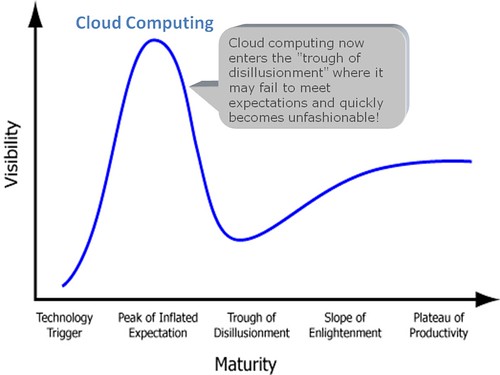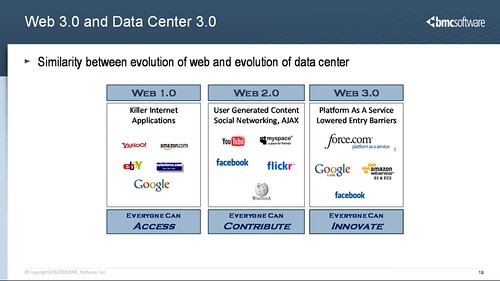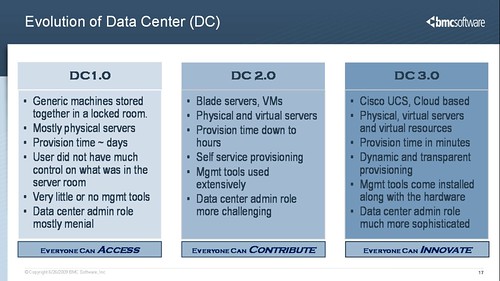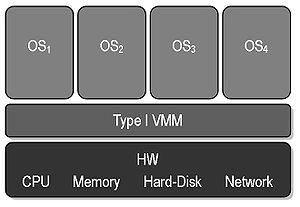Here is a list of technology events happening in Pune over the next few days. To be informed of these events in advance, you should subscribe to get the PuneTech calendar event announcements by email. Click here to subscribe.
- [Thu] Panel Discussion: Intelligence at the Edge with @DruvaInc @Helpshift @Uniken_Inc and @nexusvp
- [Fri] (Paid) Android QuickStart
- [Fri] GNUnify 2014 – 2-day open-source technologies conference
- [Fri] From Idea to APP (Google Admob Challenge)
- [Sat] (Nominal Fees) Breakfast with @TiEPune: Lessons on E-commerce & Internet advertising for entrepreneurs
- [Sat] Pune Cocoa Meetup: Database Wars: YapDatabase Vs Core Data
- [Sat] WordPress User Group Pune Meetup
- [Sun] Software Developers Meetup: Intro to developing a mobile app using PhoneGap
- [Tue] OpenStack Pune Meetup Group: Network Virtualization – Beyond the Basics
Panel Discussion: Intelligence at the Edge with @DruvaInc @Helpshift @Uniken_Inc and @nexusvp
- Date: Thu, 13 Feb 6:00pm – 9:00pm
- Location: Sumant Moolgaokar Auditorium, Ground Floor, Wing A, ICC Trade Center, SB Road
Nexus Venture Partners is one of India’s top technology venture capital firms, and has invested in 4 of Pune’s top technology startups: Druva, Helpshift, Pubmatic and Uniken.
On 13th October, Nexus is hosting a panel discussion on the topic “Intelligence at the edge”. With the CTOs of Druva and Helpshift, and the CEO of Uniken as panelists, it promises to be a great event that every techie in Pune who’s interested in the future of technology must attend.
Detailed Program:
– 6 – 6:30pm: Introductions
– 6:30 – 7:30pm: Panel Discussion.
– Panel Moderator:
– Jishnu Bhattacharjee, MD, Nexus Venture Partners
– Panelists:
– Milind Borate, Co-founder & CTO, Druva
– Baishampayan Ghose, Co-founder & CTO, Helpshift
– Sanjay Deshpande, Chief Innovation Officer & CEO, Uniken
– 7:30 – 8pm: Q & A
– 8 – 9pm: Networking over dinner
Fees and Registration
This event is free and open for anybody to attend. Please register here: https://docs.google.com/forms/d/16L17gU5zTGPFtfIxQWymz5tJWqcfzG3IsWvdeIag5DA/viewform
Please double-check the date/time/venue of the event at the above link. We try to ensure that PuneTech calendar listings are accurate, but occasional errors creep in.
About the PuneTech Calendar
Get event announcements by email. Click here to subscribe (free) to the PuneTech Calendar of events.
(Paid) Android QuickStart
- Date: 14-15 Feb
- Location: Pune – Contact Organizer for details
This Android application programming workshop from Cralina is a hands on workshop designed to address the need of professionals who would like to start up on Android mobile application development. It is also useful for professionals who have worked on any other mobile platform and need to develop a good understanding of Android application development concepts.
Target Audience:
- Developers, technical leads/managers who need to develop a good basic understanding of Android
- Engineers/Managers who wish to understand Android architecture, application development on Android and also test Android based products
- Anyone who wishes to develop a good understanding of the workings of Android
Fees and Registration
This is a paid event. Check the event website: http://cralina.com/upcoming-programs#AS for details.
Please double-check the date/time/venue of the event at the above link. We try to ensure that PuneTech calendar listings are accurate, but occasional errors creep in.
About the PuneTech Calendar
Get event announcements by email. Click here to subscribe (free) to the PuneTech Calendar of events.
GNUnify 2014 – 2-day open-source technologies conference
- Date: 14-15 Feb
- Location: SICSR, (Symbiosis Institute of Computer Studies and Research, near Om Market, Model Colony)
GNUnify is one of India’s biggest open source conferences, will happen again in Pune, this Friday and Saturday (14, 15 Feb) in SICSR.
The conference will have talks and workshops on Android Hacking/Development, Programming with GCC/GDB/GMake, HTML5/CSS3/JavaScript/JQuery, Python, Google Admob challenge, OpenStack, Drupal and more.
Lots of people from all over India, and also some from abroad, usually come for this conference. This is your chance to connect with people passionate about technologies, and enthusiastic students.
This conference is free and open for anyone to attend. Click here to register.
From Idea to APP (Google Admob Challenge)
- Date: 14-15 Feb
- Location: 7th floor, SICSR, (Symbiosis Institute of Computer Studies and Research, near Om Market, Model Colony)
This is a 2 day workshop happening at SICSR along with GNUnify, the 2-day free and open source conference. Participants get an insight into how to transform an idea into an app. Student participants can present the same app in “Student’s admob Challenge”. Find more details at http://www.google.co.in/ads/admob/challenge.html
Entry is free. Though students can participate in Student’s Admob Challenge, working professionals too can participate as campus has kept it open to all.
Event website: http://www.meetup.com/Pune-GDG/events/164627612/ and http://gnunify.in
Please double-check the date/time/venue of the event at the above link. We try to ensure that PuneTech calendar listings are accurate, but occasional errors creep in.
About the PuneTech Calendar
Get event announcements by email. Click here to subscribe (free) to the PuneTech Calendar of events.
(Nominal Fees) Breakfast with @TiEPune: Lessons on E-commerce & Internet advertising for entrepreneurs
- Date: Sat, 15 Feb 8:30am – 10:30am
- Location: Shekhar Natu Hall, 5th Floor, A-Wing, MCCIA, ICC Towers, SB Road
TiE Pune Breakfast session – with Pehr Luedtke CEO of SpotZot
As with any business move or expansion, considering an online presence can raise a sometimes dizzying list of questions for an entrepreneur. Exactly what must be put in place to make it happen? How does an online presence change the market for the business? What are competitors doing? How will people shop? What kind of security is required? How will customers pay online? Small businesses that have little or no e-commerce capabilities on their websites should know about taking the next step in converting their marketing sites into selling locations that extend their customer bases, images and sales in entirely new ways. Those entrepreneurs not yet online need to discover how the Internet is likely to transform their businesses and introduce them to markets far beyond those which are currently in reach. The most amazing aspect of e-commerce is its ability to impact sales and marketing efforts immediately. By going online, suddenly a neighborhood bakery or a home based consulting service expands its reach to a national, or even international base of potential customers. Web-based sales know no international boundaries.
About the Speaker – Pehr Luedtke
Pehr has a decade of experience in ecommerce, internet advertising, and retail. Currently, Pehr is the CEO of Spotzot, a leading location-based mobile advertising platform for retailers and brands. Spotzot employs proprietary technology to create compelling offers for consumers near retailers that they care about. Spotzot is venture funded with headquarters in San Francisco and a large development center in Pune. Prior to Spotzot, Pehr was on the executive team at Bazaarvoice, the leading ratings and reviews software company. He joined Bazaarvoice through its acquisition of PowerReviews, where he was CEO. Prior to PowerReviews, Pehr held leadership positions at eBay, Levi Strauss, and Oliver Wyman. He has an undergraduate degree from Princeton and an MBA from Stanford. Pehr lives in the Bay Area with his wife, two children, and a new puppy.
About TiE Pune
Pune chapter of TiE – A non-profit global network of entrepreneurs and professionals, established to foster entrepreneurship and nurture entrepreneurs.
Fees and Registration
Fees : 150/ members and 300/- non-members of TiE.
Register here: http://em.explara.com/event/tiepune15feb
Please double-check the date/time/venue of the event at the above link. We try to ensure that PuneTech calendar listings are accurate, but occasional errors creep in.
About the PuneTech Calendar
Get event announcements by email. Click here to subscribe (free) to the PuneTech Calendar of events.
Pune Cocoa Meetup: Database Wars: YapDatabase Vs Core Data
- Date: Sat, 15 Feb 3:00pm – 5:00pm
- Location: Synerzip (3rd Floor, Revolution Mall, next to City Pride, Kothrud, Pune)
Chaitanya (@chaitanyapandit) from http://www.includetech.co will be speaking about his new found love towards YapDatabase.
YapDatabase is a “key/value store and MUCH MORE” built atop sqlite for iOS & Mac. It has the a Ton of features can be found on GitHub page
There will be a follow up Panel Discussion on YapDatabase Vs Core Data.
So, roll up your sleeves, brush up your thoughts on both these DBs and see you there.
About Pune Cocoa Meetup Group
See http://www.meetup.com/Pune-Cocoa/ for more details about the Pune Cocoa meetup group.
Fees and Registration
This event is free and open for anybody to attend. Please register here: http://www.meetup.com/PuneCocoa/events/162447612/
Please double-check the date/time/venue of the event at the above link. We try to ensure that PuneTech calendar listings are accurate, but occasional errors creep in.
About the PuneTech Calendar
Get event announcements by email. Click here to subscribe (free) to the PuneTech Calendar of events.
WordPress User Group Pune Meetup
- Date: Sat, 15 Feb 5:00pm – 7:00pm
- Location: Cafe Coffee Day, Ground Floor, Mariplex Mall
If you’re interested in meeting other WordPress developers in Pune…
Fees and Registration
This event is free and open for anybody to attend. Please register here: http://www.meetup.com/WordPress/Pune-IN/1103872/
Please double-check the date/time/venue of the event at the above link. We try to ensure that PuneTech calendar listings are accurate, but occasional errors creep in.
About the PuneTech Calendar
Get event announcements by email. Click here to subscribe (free) to the PuneTech Calendar of events, or follow @punetech on twitter
Software Developers Meetup: Intro to developing a mobile app using PhoneGap
- Date: Sun, 16 Feb 11:00am – 1:00pm
- Location: 5th Floor, A-Wing, MCCIA, ICC Towers, SB Road
In this tutorial, we shall create a fully functional mobile application with PhoneGap. We shall cover:
- How to use different local data storage strategies.
- How to use several PhoneGap APIs such as Geolocation, Contacts, and Camera.
- How to handle specific mobile problems such as touch events, scrolling, styling, page transitions, etc.
- How to build an application using a single page architecture and HTML templates.
- How to build (compile and package) an application for 6 platforms using PhoneGap Build.
To attend this tutorial, all you need is a code editor (Notepad++ is fine too!), a modern browser, and a connection to the Internet (will be provided at the venue). A working knowledge of HTML and JavaScript is assumed, but you don’t need to be a JavaScript guru.
Fees and Registration
This event is free and open for anybody to attend. Please register here: http://www.meetup.com/Software-Developers-In-Pune/events/165018212/
Please double-check the date/time/venue of the event at the above link. We try to ensure that PuneTech calendar listings are accurate, but occasional errors creep in.
About the PuneTech Calendar
Get event announcements by email. Click here to subscribe (free) to the PuneTech Calendar of events, or follow @punetech on twitter
OpenStack Pune Meetup Group: Network Virtualization – Beyond the Basics
- Date: Tue, 18 Feb 5:30pm – 8:30pm
- Location: JW Marriot, SB Road
Agenda
- 5:30-6pm: Registration
- 6pm-7:30pm: Future of Network Virtualization: Going beyond the basic Use Cases, Speaker : Martin Casado
- 7:30pm: Networking and Dinner
About OpenStack Pune Meetup Group
This group is for OpenStack and Virtualization enthusiasts – Developers, IT Admins, Open Source Contributors to learn and share knowledge about this upcoming platform. This group is interested in Open Source, Cloud Computing, SaaS and Cloud Computing, OpenStack – Quantum, Virtualization, Building private cloud with OpenStack, OpenStack.
Fees and Registration
This event is free and open for anybody to attend. Please register here: http://www.meetup.com/OpenStack-Pune/events/162779722/
Please double-check the date/time/venue of the event at the above link. We try to ensure that PuneTech calendar listings are accurate, but occasional errors creep in.
About the PuneTech Calendar
Get event announcements by email. Click here to subscribe (free) to the PuneTech Calendar of events.





![Reblog this post [with Zemanta]](http://img.zemanta.com/reblog_b.png?x-id=2f1b8836-1c22-4547-8b20-32126d84e047)




![Reblog this post [with Zemanta]](http://img.zemanta.com/reblog_b.png?x-id=a6ce1607-1a6f-4e70-b4f9-1f26c9a9db6c)

![Reblog this post [with Zemanta]](http://img.zemanta.com/reblog_b.png?x-id=46bb08d3-69f4-4541-98b6-29189b874b69)

![Reblog this post [with Zemanta]](http://img.zemanta.com/reblog_b.png?x-id=94dcea4c-64d2-42d6-ab8d-9dad45f19813)
